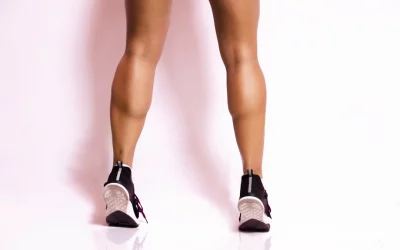Lower back pain has a way of sneaking into your life, turning simple things like tying your shoes or enjoying a good book into uncomfortable tasks. Whether it’s from sitting too long at your desk or waking up with an unexpected ache, that nagging pain can really cramp your style. Sound familiar? You’re definitely not alone.
Here’s the good news: stretching can make a world of difference. With just a few easy stretches, you can ease that tightness, improve your flexibility, and give your back the TLC it deserves—all without leaving your home.
In this article, we’ll take you through some super simple stretches—from the relaxing Child’s Pose to the gentle Supine Twist—that are perfect for relieving lower back pain. So, grab a mat, find a comfy spot, and let’s start stretching your way to a happier, healthier back!
Why Stretching Helps Relieve Lower Back Pain
Your lower back plays a crucial role in supporting your body throughout the day, but it’s also one of the most common areas to experience pain. Whether it’s from sitting at a desk too long, weak core muscles, or overdoing it at the gym, tension can build up, leaving your back stiff and uncomfortable. That’s where stretching comes in to save the day.
Stretching works wonders by loosening tight muscles, boosting circulation, and promoting better spinal alignment. These simple movements not only relieve existing pain but also help prevent future discomfort by keeping your back flexible and resilient.
Beyond just pain relief, regular stretching improves posture, enhances mobility, and makes everyday movements—from bending down to tying your shoes to standing tall—feel effortless.
“When I made stretching a daily habit, the difference was night and day. My lower back feels lighter, less stiff, and I no longer dread long hours at my desk. It’s become my go-to fix for staying comfortable and mobile!”
Simple Lower Back Stretches You Can Do at Home
 Cat-Cow Stretch
Cat-Cow Stretch
The Cat-Cow Stretch is a gentle, flowing movement that helps to mobilize the spine and reduce stiffness in the lower back. This dynamic stretch is perfect for warming up the back and promoting flexibility.
This stretch is especially beneficial as it helps:
-
Improve spinal flexibility, easing tension in the lower back.
-
Relieve stiffness caused by sitting or poor posture.
-
Prepare the back for movement with a gentle warm-up.
To perform the Cat-Cow Stretch, follow these steps:
-
Start on all fours with your wrists under your shoulders and knees under your hips.
-
Inhale as you arch your back, lifting your head and tailbone toward the ceiling (Cow Pose).
-
Exhale as you round your back, tucking your chin to your chest and pelvis under (Cat Pose).
-
Repeat for up to 30 seconds, moving fluidly with your breath.
Child’s Pose
Child’s Pose is a calming yoga pose that stretches the lower back and hips, making it ideal for releasing tension and promoting relaxation.
This stretch is especially beneficial as it helps:
-
Relieve lower back and hip tension.
-
Promote relaxation by calming the nervous system.
-
Improve lumbar flexibility for smoother movement.
To perform Child’s Pose, follow these steps:
-
Kneel on the floor, sitting back onto your heels.
-
Stretch your arms forward, lowering your forehead to the ground.
-
Keep your hips resting on your heels and feel a gentle stretch along your lower back.
-
Hold for up to 30 seconds, breathing deeply.
Supine Twist
The Supine Twist is a gentle rotation stretch that releases tension in the lower back and improves spinal mobility.
This stretch is especially beneficial as it helps:
-
Loosen tight muscles in the lower back.
-
Relieve tension from prolonged sitting.
-
Enhance spinal flexibility and alignment.
To perform the Supine Twist, follow these steps:
-
Lie on your back with your legs extended.
-
Bend one knee and cross it over your body, allowing it to rest on the floor.
-
Keep your shoulders flat on the ground and stretch your arms out to the sides.
-
Hold for up to 30 seconds, then switch sides.
Seated Forward Fold
The Seated Forward Fold is a great way to stretch both the lower back and hamstrings, alleviating tightness and supporting proper posture.
This stretch is especially beneficial as it helps:
-
Release tension in the lower back and legs.
-
Improve flexibility in the hamstrings and spine.
-
Support spinal alignment for better posture.
To perform the Seated Forward Fold, follow these steps:
-
Sit on the floor with your legs extended straight in front of you.
-
Hinge forward at your hips, reaching toward your feet.
-
Keep your back straight and avoid forcing the stretch.
-
Hold for up to 30 seconds, breathing deeply.
Pelvic Tilt
The Pelvic Tilt is a subtle yet effective movement that strengthens the lower back while reducing strain and improving mobility.
This stretch is especially beneficial as it helps:
-
Strengthen core muscles to support the lower back.
-
Reduce tension and improve lower spine mobility.
-
Alleviate strain by enhancing stability and posture.
To perform the Pelvic Tilt, follow these steps:
-
Lie on your back with your knees bent and feet flat on the floor.
-
Gently tilt your pelvis upward, pressing your lower back into the ground.
-
Hold for a few seconds, then return to the neutral position.
-
Repeat for 10–15 repetitions with slow, controlled movements.
Adding these lower back stretches to your daily routine can bring lasting relief and improve your overall flexibility. For more personalized guidance, check out WeStretch. Virtual coaches Ada and Bruce can help you tailor a routine to meet your needs.
How to Incorporate These Stretches into Your Routine
Adding lower back stretches to your daily routine is easier than you might think. With just a few minutes each day, you can ease discomfort and keep your back feeling its best. Here’s how to make stretching a natural part of your schedule:
Begin your day with gentle movements like Cat-Cow or Child’s Pose to wake up your spine and prepare for the day ahead. Midday, combat stiffness with the Supine Twist or Seated Forward Fold—perfect after hours of sitting. Before bed, wind down with calming Pelvic Tilts to release tension and relax your lower back.
Consistency is key to seeing results. Start small with 10–15 minutes daily, and you’ll soon notice improvements in flexibility and back health. Ready to make stretching a habit? Discover how WeStretch simplifies stretching routines and keeps you on track at WeStretch.
Exercise Smarter with WeStretch: Your All-in-One Stretching Assistant
![]() A consistent full-body stretching routine is essential for improving flexibility, supporting injury prevention, and enhancing overall well-being. Carefully following simple yet effective stretches targeting the hamstrings, hip flexors, back, quads, chest, and shoulders, individuals of any fitness level can reap the benefits.
A consistent full-body stretching routine is essential for improving flexibility, supporting injury prevention, and enhancing overall well-being. Carefully following simple yet effective stretches targeting the hamstrings, hip flexors, back, quads, chest, and shoulders, individuals of any fitness level can reap the benefits.
Regular stretching, with attention to proper form and consistency, can help you move more freely, recover faster, and feel better in everyday activities.
Looking for a way to add some fun to your stretching routine? Check out WeStretch—an app that’s like your own personal stretch coach! With tailored plans, easy-to-follow demos, and progress tracking, it’s got everything you need to keep you limber and on point. Ready to get flexible? Sign up today and let’s get stretching!
FAQ
What causes lower back pain, and how can stretching help?
Lower back pain often stems from prolonged sitting, poor posture, weak core muscles, or overuse. Stretching helps by loosening tight muscles, improving blood circulation, and promoting spinal alignment, which alleviates pain and supports recovery.
How often should I do these stretches for lower back pain relief?
To see the best results, aim to perform these stretches daily or at least 4–5 times per week. Consistency is key to relieving pain, improving flexibility, and preventing stiffness over time.
Are these stretches safe for people with chronic back pain?
Yes, but proceed with caution. These gentle stretches are generally safe, but if you have chronic back pain or a medical condition, consult with a healthcare professional before starting a routine to ensure safety.
Can these stretches help prevent future lower back pain?
Absolutely! Regular stretching strengthens and supports the lower back, improves posture, and reduces tension, all of which help prevent future pain and enhance mobility during daily activities.
What should I do if a stretch causes discomfort or pain?
If a stretch feels uncomfortable, ease off and ensure you’re using proper form. Avoid forcing your body into a position. Persistent pain during stretching may indicate an underlying issue, so consult a healthcare professional for guidance.






